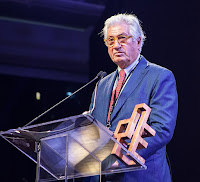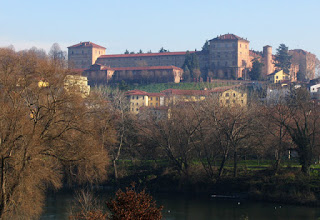Carlo Rambaldi - master of special effects
Former commercial artist who created E.T.
Carlo Rambaldi, the brilliant special effects artist who created Steven Spielberg's ugly-but-adorable Extra-Terrestrial known as E.T. and Ridley Scott's malevolent Alien, died on this day in 2012 in Lamezia Terme, the city in Calabria where he settled in later life. He was a month away from his 87th birthday. Unlike modern special effects, which consist of computer generated images, Rambaldi's creatures were typically made of steel, polyurethane and rubber and were animated by mechanically or electronically powered rods and cables. Yet his creations were so lifelike that the Italian director of one of his early films was facing two years in prison for animal cruelty until Rambaldi brought his props to the court room to prove that the 'animals' on screen were actually models. It was during this time that Rambaldi, a former commercial artist who had graduated from the Academy of Fine Arts in Bologna, not far from his home town of Vigarano Mainarda in Emilia-Romagna, pioneered the use animatronics (puppets operated mechanically by rods or cables) and mechatronics, which combined mechanical and electronic engineering. Read more…
__________________________________________________________________
Marina Berlusconi - businesswoman
Tycoon’s daughter who heads two of his companies
Marina Berlusconi, the oldest of business tycoon and former Italian prime minister Silvio Berlusconi’s five children, was born on this day in 1966 in Milan. Since 2003 she has been chair of Arnoldo Mondadori Editore, Italy’s largest publishing company, and since 2005 president of Fininvest, the Berlusconi holding company that is also Mondadori’s parent company. She is or at times has been a director of several other Berlusconi companies, including Mediaset, Medusa Film, Mediolanum and Mediobanca. Forbes magazine once described her as the most powerful woman in Italy and one of the 50 most powerful women in the world. Born Maria Elvira Berlusconi, her mother is Carla Elvira Lucia Dall’Oglio, a woman the businessman met for the first time at a tram stop outside Milan Centrale railway station in 1964 and married the following year, at a time when he was an enterprising but relatively obscure real estate broker. They were divorced in 1985, much to the disappointment of Marina and her brother, Piersilvio, after their father had begun a relationship with the actress Veronica Lario, who would become his second wife and the mother of his third, fourth and fifth children. Read more…
__________________________________________________________________
Ippolito de' Medici – Lord of Florence
Brief life of a Cardinal, soldier and patron of the arts
Ippolito de' Medici, who ruled Florence on behalf of his cousin, Giulio, after he became Pope Clement VII, died on this day in 1535 in Itri in Lazio. At the age of 24, Ippolito was said to have contracted a fever that turned into malaria, but at the time there were also rumours that he had been poisoned. There were two possible suspects. The fatal dose could have been administered on behalf of Alessandro de' Medici, whose abuses he was just about to denounce, or on behalf of the new pope, Paul III, who was believed to want Ippolito’s lucrative benefices for his nephews. Ippolito was born in 1509 in Urbino, the illegitimate son of Giuliano de' Medici. His father died when Ippolito was seven and he came under the protection of his uncle, Pope Leo X. When he died five years later, Ippolito’s cousin, Giulio, who had become Pope Clement VII, sent him to Florence to become a member of the government, destined to rule the city when he was old enough. Ippolito ruled Florence on his behalf between 1524 and 1527 but then Clement VII chose his illegitimate nephew, Alessandro, to take charge of Florence instead. Read more…
Home

























